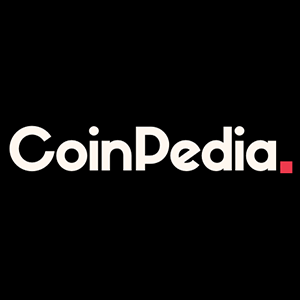Coinbase Is Implicitly ‘Eating Financial Services’ And To That, I Say, Bon Appétit!
15 min read
Summary At first glance, Coinbase appears to be a play on crypto prices. Company profits and the stock price have been behaving that way. COIN started in 2012 as a bitcoin exchange and since then has added more coins to its trading repertoire and a lot more capabilities for its users. But the company has bigger visions. It says crypto is “eating financial services” and that it’s number one in crypto. That’s big talk, but the world seems to be evolving in COIN’s favor. Stablecoin, a crypto pegged to a non-crypto asset (usually the dollar) unites the blockchain with ordinary commerce. That paves the way for a big disintermediation wave (like others we’ve seen in the past) that bypasses costly, time-consuming middlemen. My “Buy” For COIN reflects this, not the next move in crypto prices. I’m undecided… Pastrami (piled high) with a bit of mustard, and grease moistening the bread. Or perhaps, a thick hot bagel with cream cheese and blueberry jelly. It’s a good thing I’m not running things at Coinbase Global (NASDAQ: COIN) . Brian Armstrong has different and more decisive tastes. He’s the CEO and Co-Founder of COIN. He shared his food craving with analysts on the company’s 5/8/25 earnings call . He said: I think in 5 to 10 years, our goal is to be the number one financial services app in the world across those customer segments because we believe that crypto is eating financial services, and we are the number one crypto company …. (Emphasis added.) So, he didn’t directly say COIN is eating financial services. But he sure as heck implied it. The story is quite old. But his verbiage is new… and cool. I remember such behavior described using a much bigger word… disintermediation. It came of age… in 1966 when Regulation Q interest rate ceilings prevented banks and savings institutions from competing effectively with non-depository institutions, such as brokers, disrupting the banks’ ability to lend. The double-digit inflation of the late 1970s… caused many consumers to put their liquid assets in short-term money funds…. Finally, in 1980, federal legislation unleashed deposit interest rates. That let banks credibly compete with interlopers who had been disintermediating them. This doesn’t only happen in finance. Consider how easy it was to shop for air travel bargains? Pre-internet, you’d have worked with your favorite travel agent. Do these even exist today? Even now, nearly 60 years after regulation Q, disintermediation, bypassing middlemen, is still a huge finance topic. It’s so huge, that the author of a 3/30/25 letter to the Financial Times may at some point wish the editors hadn’t published his missive : Crypto is no more an investment than investing in a horse race at the bookmakers. Call it what it is: speculation or gambling. COIN is playing a leading role in working to make sure that letter ages dismally. To be sure, I’m a recent convert. As recently as 5/9/25 , I’d been justifying Bitcoin as a digital collectible. I struggled to see it as commercially useful. Digging into COIN has been making me expand my thinking. The company’s business, already complicated, is getting more so. The numbers are volatile to the point of mocking forecasts. The stock’s valuation… I’ve seen worse, but this isn’t for Graham & Dodd or Warren Buffett disciples. But COIN is a change-the-word company. There can never be an assurance of success. But COIN is proceeding… let’s say racing ahead… sensibly. And having been in stock analysis since late 1979, I’ve often seen how these companies, despite scary numbers early on, can turn into wealth-creation machines for shareholders. The COIN Basics The firm launched in 2012. It was a platform through which people could buy and sell Bitcoin. Based on what we know of stockbrokers (old-time brick-and-mortar and now online), that sounds sparse. We’ve seen how stockbrokers added ancillary capabilities over time. They now trade many types of securities beyond stocks. They spread beyond the U.S. They perform bank-like functions. They offer advice. You know the drill. Responding to the needs of its growing user base, COIN pursued an analogous path. Over the years, COIN has added such things as: More kinds of crypto to the product it trades Different platforms for new or casual users versus advanced traders Custody services to hold its customers’ crypto Wallets for its customers Institutional services Crypto derivatives Capabilities beyond the U.S. A credit card that lets users buy things with their crypto Subscription services New offerings make it easier to attract more users. More customers give COIN the wherewithal to add more offerings. It looks like COIN is enjoying a virtuous cycle. How COIN ranks relative to rivals depends on what you count. According to a 5/7/25 source, COIN isn’t close to being the trading-volume top dog. Binance is tops with a 38.0% market share . COIN, with a 6.9% share, is sixth. For assets under management, a 2/8/25 source quotes COIN CEO Armstrong as follows: If you think of Coinbase as a bank, we now hold about $0.42T in assets for our customers, which would make us the 21st largest bank in the US by total assets, and growing. If you think of us more like a brokerage, we’d be the 8th largest brokerage today by AUM. Details aside, I think we can agree that COIN is big in terms of AUM. That’s especially so given how young COIN and the crypto industry are and despite COIN’s relatively high trading costs and fewer tradable crypto coin types. Generally, you can easily drive yourself crazy trying to specify more detailed item-for-item comparisons between COIN and rivals. (If you want to try with Binance, you can start here .) An investor looking for a sense of how COIN compares versus its many rivals (including Binance), would do well to simplify this: For cheapest pricing, maxing out on features, and something akin to wild-west type freedom, COIN would not be the platform of choice. For a more establishment-/compliance-friendly, easier-to-use platform, COIN is likely to have the most appeal. For as rapidly as COIN has been growing, it remains the conservative choice in the context of the crypto world. That doesn’t mean it’s always smooth sailing. Growth Patterns For one thing, growth has been breathtakingly choppy. That shouldn’t surprise anyone, given how volatile crypto prices have been. This is still a very new asset class. And many still do not accept its legitimacy. (See, for example, the above-quoted letter to the ft.com editor. And for a chuckle, check the “ me know that’s not real money ” bit I described on 5/9/25.) So, nothing in COIN’s data resembles the straight or even straight-ish growth patterns investors cherish. Here’s the historical information for COIN’s Monthly Transacting Users (MTUs). Analyst compilation based on data from company 10K documents Speaking like an equities technical analyst, I might say that after an initial surge, MTUs have corrected, found, and bounced off of a support level, and are now rallying towards the last peak. What’s next? Can MTUs break through the old high? Or will it run into “resistance?” I think it will break through. We know anecdotally that crypto acceptance is expanding. It’s even becoming a respectable treasury asset. Meanwhile, the public took note of our newly elected pro-crypto administration… On 11/24, COIN’s new customer additions jumped 704%. That receded to 476% in 12/24. We can’t yet know how many of these newbies will eventually become MTUs. Nor do we yet know how much longer COIN’s super-normal user growth will persist. But the ears-to-the-ground perception of evolving attitudes toward crypto augurs well for future growth. So, too, do new directions in which COIN has been pointing its business (see below). Toward a More Constructive Legal/Regulatory Framework The SEC recently tried to accuse COIN of trading in securities outside the agency’s standard framework. Securities? Is crypto that sort of asset? That posed intriguing questions for federal courts. Ultimately, though, in January 2025, with a new pro-crypto administration entering Washington, the SEC abandoned its efforts. (See generally, here .) That doesn’t mean regulators will turn blind eyes to crypto. Instead… It suggests that regulatory agencies are acknowledging the need for a more modern and tailored approach…. (amid the likelihood that) Congress must also step in and set a clear course for the cryptocurrency industry. Beyond the legislature, the SEC’s evolving stance may also encourage further collaboration between regulators and industry participants, paving the way for regulation that balances consumer protection with innovation. I expect COIN to be deeply involved in any such collaboration. That’s the sort of compliance-friendly culture through which COIN differentiates itself from rivals. Beyond the Basics Let’s consider here two crypto-centric aspects of COIN’s business. You won’t find these in traditional financial services. Staking Staking is a way COIN (and/or similar entities) and its users can make money by helping to manage the blockchain. The blockchain is “ the official Bitcoin public ledger .” You can imagine it being crypto’s answer to the Federal Reserve. Both are the bosses, the authorities that control things within their respective domains. The Fed rules conventional money (fiat currency). The blockchain rules cryptocurrency. (Each type of crypto has its own blockchain. Similarly, each fiat currency has its own Fed-like king.) So much for similarities. Now come the differences. The Fed is a centralized authority staffed by appointed humans. How do you get to be a Fed governor? You have to know and be liked by somebody, like a head of state. How do those folks decide what to do? Don’t we all wish we knew. If we did, we wouldn’t keep pouring gobs of cyber-ink into never-ending analyses and predictions. The blockchain is a centralized authority staffed-so to speak, by computer stuff (data, code). How does the computer stuff get into (hired by) the blockchain? It has to be logically legit. Put another way, it has to be validated. That’s done by validators . These entities… Verify transactions, propose new blocks, and participate in consensus mechanisms to ensure the accuracy and reliability of the blockchain…. (They) work by verifying transactions, securing the network against attacks, and making sure that only legitimate transactions are added to the blockchain ledger. Instead of relying on traditional mining methods, crypto validators put up a stake as collateral, which can be forfeited if they behave maliciously or fail to perform their duties properly . (Emphasis added.) You (the entity, like COIN) do this by computer. There’s no fiat here. You get to be a validator through a selection process. It gives heavy emphasis to how much skin you have in the game… in other words, how much crypto you post as collateral. COIN can post its own crypto as collateral. But its chances of being chosen rise if its users help by chipping in some or all of the crypto they hold at COIN. When users do that, we say they are staking their crypto. They never lose custody of their crypto. It all stays in their wallets. They do, however, give up the right to withdraw the crypto for as long as they leave it staked. Now here’s the good part… COIN and its users get paid for staking crypto and serving as validators . The network pays COIN by awarding it crypto coins. And COIN shares its reward with the users who staked (in proportion to how much each staked). Potential income to users is not trivial. As of this writing , COIN was suggesting they could earn up to a 14% APY. I call out staking here for two reasons. First, I want to demonstrate an interesting income source available to COIN and its users. Second, I want to expand on what I previously wrote about the important role of the blockchain. Note, in particular, how broadly decentralized it is… no fiat, no political appointees, no media pressure. This will help crypto eat financial services. Now, let’s look at another recipe item… Stablecoin So, what exactly determines prices for crypto coins? That’s easy… supply and demand. So, what determines supply and demand? How many hours, days, etc. do you have to consider all the opinions on these topics? That’s why crypto has been so darn volatile! So, what exactly determines the price for stablecoin? That’s easy… each is worth one dollar (or is priced in terms of another asset… though 99% are presently dollar-based). Huh? Does that mean supply and demand are in equilibrium when stablecoin trades for one dollar? No. Stablecoin is specifically and by definition pegged to the dollar, one-to-one. Then what’s the point? Why not just use dollars? Because stablecoin lives (is stored and exchanged) on the blockchain. If you want to join COIN in eating financial services, consider this your set of utensils. Stablecoins are primarily used for trading crypto assets, transacting in goods services, insulating against local currency instability, and sending payments across borders…. Investors increasingly use stablecoins rather than cash to buy into and out of crypto asset investment positions, since many exchanges make it quicker and easier to trade with crypto assets than with real-world assets. ( Source .) This is how we can join crypto with regular commerce. (The key isn’t in crypto fluctuations. It’s about the blockchain.) There’s also an interesting here-and-now-and-growing angle to this. COIN is like a stablecoin banker. It issues USDC, a type of stablecoin (together with 50-50 partner Circle Internet Group), and holds dollars in reserve. Dollar reserves equal the value of the stablecoins. (Regular banks hold much smaller percentages of asset value in reserve.) COIN and Circle earn interest (50-50) by investing the dollars in U.S. Treasury Bills or equivalent interest-earning assets. And COIN gets 100% of interest earned by investing reserves relating to stablecoins owned by users but held on COIN. That is turning into a nice and growing income stream for COIN. Salivating Over the Chez Financial Services Dinner Menu (a/k/a Progressing Toward Disintermediation) One reason why I discussed staking and stablecoin is, obviously, to explain the nice business opportunities COIN is enjoying today. But blockchain plus stablecoin equals one heck of a way to revolutionize commerce. (Hence the change-the-world investment case for COIN). Before going on, I should add one more point. Each crypto coin has its own blockchain. Each such chain has unique characteristics in how it works. Speed variations are important. And the Ethereum chain can record smart contract terms. These are self-executing… As soon as “A” is verified, then “B” automatically happens. Much of this would relate to verifications of ownership, rights, liabilities, etc. That sounds like a breathtakingly dull topic. It is. And as a result, it’s seldom discussed (aside from cybercrime and the angst that brings). But verification is CRITICAL. If you want a sense of how critical, check out The Mystery of Capital by Hernando de Soto. In sum, de Soto argued that developing countries haven’t been stunted by a lack of assets. Instead, he says, it’s been about property ownership being “secured informally, which prevents the use of property as collateral. The inability to convert assets into capital keeps the developing world from benefiting from capitalism.” I didn’t get a chance to look into whether the economies he discussed improved since the book’s 2000 publication . Either way, I found it eye-opening. I always understood authentication is important. But I never realized how important it is until I read de Soto’s work. The blockchain, as a penultimate super-verified set of records, opens up new possibilities. The idea is to eliminate intermediaries, cut costs, and boost speed, all with unprecedented reliability. We’re already starting to see early implementations. For example, BitPesa uses blockchain to facilitate cross-border payments in Africa. Traditional methods are slow and costly. BitPesa slashes transaction times and costs. Companies like AXA have implemented smart contracts for flight delay insurance. They automate claim processing, ensuring quick payouts. Walmart uses blockchain to track food products. Working with IBM, it set up a decentralized real-time database of product origins. That helps with traceability and assuring safety. Pharmaceutical companies like Pfizer use blockchain to track the entire supply chain. That lets it verify medication authenticity and ward off counterfeiting. Ubitquity provides title management solutions using blockchain. That makes property transfers more efficient and secure. Energy companies like LO3 Energy use it for peer-to-peer energy trading. Consumers can directly buy and sell excess energy through a secure network. MovieCoin uses cryptocurrencies to finance and distribute films. That benefits both investors and producers. Today, such things seem minor. Might any of them amount to a portion of the EPS of any company that, expressed as two decimal places, would round to more than $0.00? I doubt it. But imagine ahead. Old-timers like me might have an edge here. We’ve seen much in terms of how extensively, boldly, and rapidly tech can evolve. (Many believe teens and 20-somethings can better use new tech. I think that’s an open question. But we 60 and 70 or more somethings have seen and experienced a lot. Don’t underestimate our ability to visualize future potential! Perhaps that’s why, as I aged, I became more of a growth investor.) In sum, I believe crypto and COIN really will wind up eating financial services. The Numbers Warning… You’re going to see a lot of volatility here. So far, it’s been… as goes crypto prices, so goes COIN (the company and its stock). That will account good and bad things you’ll see. The investment case here can be about crypto’s next big move… if you are trading-oriented and want to approach it this way. I’m not. My case for COIN is based on my belief it’ll progress beyond all these numbers as it swallows and digests financial services. So now, let’s start with the quarterly revenue and EPS trends. Analyst Compilation based on Data from Seeking Alpha Earnings and Financials Presentations Analyst Compilation based on Data from Seeking Alpha Earnings and Financials Presentations How ‘bout those roller coaster EPS comparisons! Try summing the quarters and comparing your answers to the annual figures. These are completely independent data items computed by Seeking Alpha’s data provider. They don’t depend on one another. When the annuals are so far off from the sums of the quarterlies, that, to me, indicates that analysts collectively do not have a handle on their numbers. I’ve done time in the analysts’ places. So I understand. There’s often much less science and a lot more guessing than many realize. For COIN, I expect it’s mainly the latter. Now, take a look at the historic and expected forward growth rates. (I compare COIN to medians among companies in the Financial Exchanges and Data industry and in the portfolio of the SPDR S&P 500 ETF ( SPY ). I use medians since these aren’t impacted by wild distortions often caused by unusual data items.) Analyst’s computations and summary from data displayed in Seeking Alpha Portfolios Analyst’s computations and summary from data displayed in Seeking Alpha Portfolios Here are the financial statement highlights. Be sure to check the footnote explaining how I tried to make sense of the operating margin! Analyst Compilation based on Data from Seeking Alpha Financial Presentations Here’s a breakdown of COIN’s revenue sources. Analyst Compilation based on Data from Company 10K and 10Q documents This next table, core fundamentals, is interesting. Analyst’s computations and summary from data displayed in Seeking Alpha Portfolios These numbers tend to not vary wildly based on short-term fluctuations. That’s why I like these data points so much. They tell a bigger-picture story. For COIN, considering how volatile things can get in the short term, I’m very pleased to see these numbers. They tell me that for all the near-term uncertainties, management has a good firm grip on the corporate reigns. Risk To get detailed here, I’d have to present the sort of verbal monstrosities attorneys force companies to stuff into their SEC documents. Do you really want that? If so, you can download the latest 10K and have at it… and hope somebody wakes you up in time to do what you have to do tomorrow. I prefer to keep it simple. The risk here is that crypto, the blockchain, and COIN’s vision will flop badly. That’s how change-the-world investing is. If the world decides it doesn’t want to change, all who back change will wind up with eggs on their faces and losses in their portfolios. What to do About COIN Stock Here’s my usual valuation table. Analyst’s computations and summary from data displayed in Seeking Alpha Portfolios Make sure you read the bigger-than-usual footnote. Clearly, there’s little use for these numbers. Let me put it this way… if the world changes as COIN (and I) expect, the company will likely blow past everybody’s forecasts and the stock will, in retrospect, look to have been bargain-priced. If not, it’ll be tears all around. Here are the price charts for COIN and bitcoin (as a proxy for crypto in general) respectively. StockCharts.com StockCharts.com The messages are clear. Sentiment around crypto, and COIN, has been bad at times in the past year (more so for crypto). But things look pretty good now for both. If you understand market timing and think both are due for correction, act on your views. Give COIN a chance to settle down. But that sort of thing is outside my skill set and inconsistent with my approach. If I see a stock riding what strikes me as a megatrend, I turn bullish. Strictly speaking… When it comes to rating stocks, I think in terms of probable future stock performance relative to the market, rather than literally buying, holding, or selling. And since I’m not rating based on a quant model, I’ll eschew “Strong …” extremes. Absent an exceptional degree of conviction, I think “Buy,” Hold”, or “Sell” are enough. For the reasons discussed above, I see COIN as likely outperforming the broader 3- to 5-year (and then some) market. I translate that to the Seeking Alpha rating taxonomy by rating COIN as a “Buy.”

Source: Seeking Alpha



